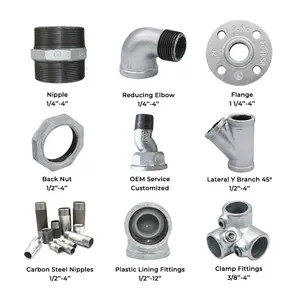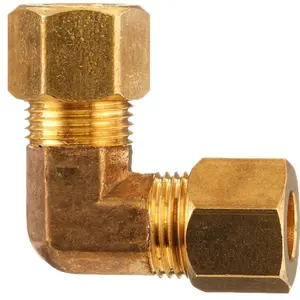Understanding GI Fittings in Piping Systems
Galvanized iron, commonly known as GI, is a pivotal material in the construction of piping systems. GI fittings are integral components that ensure the integrity and functionality of these systems. These fittings include a variety of parts such as gi elbows, gi pipe nipples, and gi reducers, each serving a specific purpose in the assembly of a robust pipeline network.
Types and Applications of GI Fittings
The versatility of GI pipe and fittings is evident in their wide range of types and applications. From gi plumbing fittings that are essential in residential water systems to gi pipe bends used in industrial settings, the applications are as varied as the fittings themselves. In commercial environments, gi pipe connections are crucial for maintaining a seamless flow of fluids without leakage or corrosion.
Features and Advantages of GI Fittings
GI fittings are known for their durability and resistance to environmental factors. A gi elbow 1 2 inch, for instance, provides a change in direction without compromising the system's pressure handling capabilities. Similarly, a gi reducer socket is designed to connect pipes of different diameters, ensuring a secure and leak-proof fit. The inherent resistance to corrosion and the ability to withstand high pressures make these fittings suitable for a wide array of piping applications.
Materials and Construction of GI Fittings
The construction of GI pipes & fittings involves a zinc coating that protects the iron from rust and corrosion. This galvanization process extends the life of gi fittings, making them a cost-effective solution for long-term use. The material's strength and the fittings' precise design, such as the tee gi or gi pipe union, contribute to a system's overall reliability and efficiency.
Selection Criteria for GI Fittings
Selecting the right GI fitting requires understanding the specific needs of a piping system. Factors such as the type of fluid being conveyed, the operating pressure, and the environmental conditions are critical considerations. For example, a hose nipple gi may be ideal for flexible connections, while a gi barrel nipple or gi hex nipple would be more suited for rigid installations. The selection process is crucial to ensure the compatibility and safety of the entire piping network.
Conclusion
In conclusion, GI fittings are essential for constructing effective and reliable piping systems. Their robustness, coupled with the variety of available shapes and sizes, such as gi reducer, gi elbow, and gi socket 1 2, cater to diverse industrial, commercial, and residential applications. While the choice of fittings depends on specific system requirements, the functionality and longevity of GI fittings make them a preferred choice in piping installations.









































 浙公网安备 33010002000092号
浙公网安备 33010002000092号 浙B2-20120091-4
浙B2-20120091-4